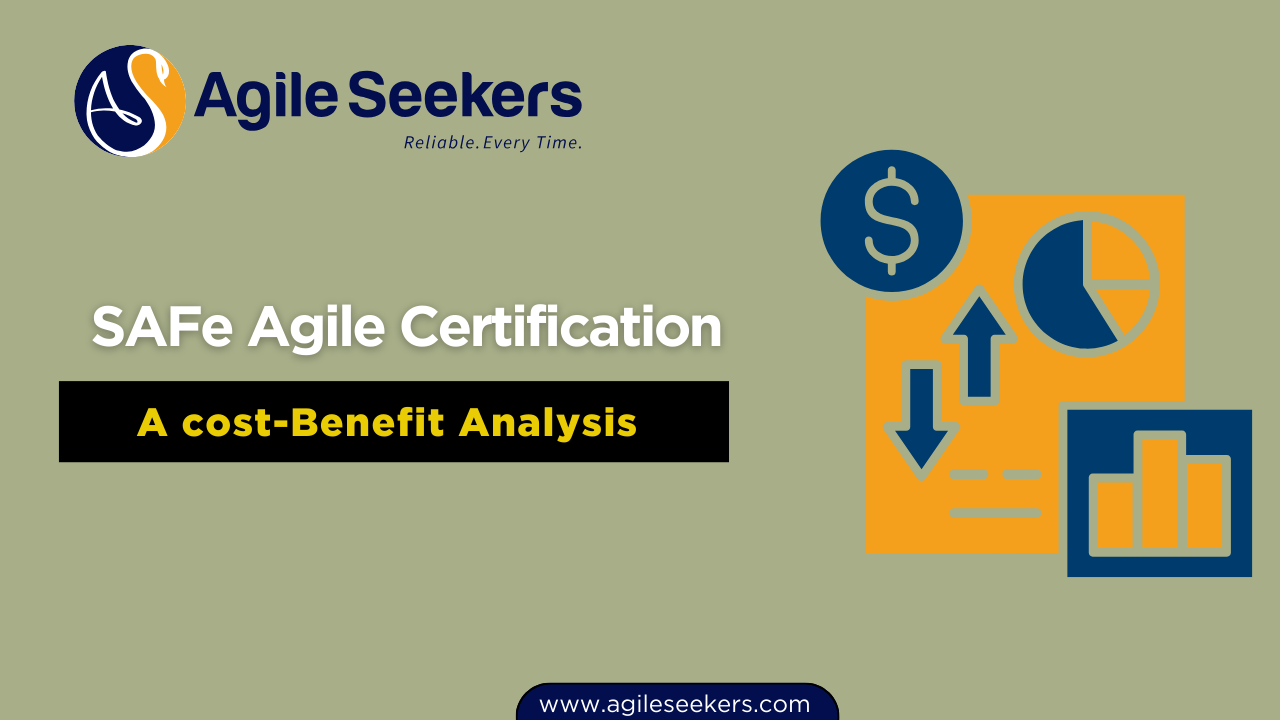Is SAFe Agile Certification Worth It in 2025? A Cost-Benefit Analysis

In an increasingly agile-driven world, the demand for professionals who understand the Scaled Agile Framework (SAFe®) is growing beyond traditional IT roles. As organizations adopt lean-agile practices across departments, professionals from finance, HR, marketing, operations, and even legal are exploring the benefits of agile certifications. One question stands out: Is pursuing a SAFe Agile certification for non-IT professionals worth the investment in 2025?
This article offers a detailed cost-benefit analysis, helping you make an informed decision about whether SAFe certification aligns with your career goals.
The Shift Towards Business Agility
Business agility is no longer a buzzword reserved for software development teams. Enterprises are scaling agile across entire value streams to remain competitive in dynamic markets. Frameworks like SAFe enable this transformation by providing structured guidance for implementing lean-agile practices at scale.
As organizations adopt agile ways of working across functions, professionals from non-technical backgrounds are increasingly expected to understand agile principles and collaborate in cross-functional agile release trains (ARTs). SAFe provides the structure and language needed for such collaboration.
What Is SAFe Agile Certification?
The SAFe Agile Certification validates your understanding of the Scaled Agile Framework. The most popular entry-level certification is the SAFe Agilist Certification, obtained by completing the Leading SAFe Training course and passing an exam.
The certification focuses on core competencies like Lean-Agile leadership, customer-centricity, product delivery, and enterprise solution delivery. It helps professionals understand how to align strategy and execution, improve time-to-market, and foster a culture of innovation.
The Growing Relevance for Non-IT Professionals
In 2025, more organizations are realizing that agile transformation is not confined to IT departments. Non-IT professionals are increasingly part of agile teams, portfolios, and value streams.
-
HR leaders use agile practices to streamline recruitment, performance management, and employee engagement.
-
Finance teams embrace lean budgeting and dynamic forecasting to support agile delivery.
-
Marketing professionals adopt agile to quickly respond to market feedback and changing customer needs.
-
Operations and legal support agile teams with more flexibility, shorter feedback loops, and continuous improvement practices.
For these professionals, SAFe Agile certification provides a shared vocabulary and framework to align with enterprise goals.
Cost of SAFe Certification in 2025
The financial investment in SAFe Agile certification varies depending on your location and the training provider. In India, the average cost of Leading SAFe certification in 2025 ranges between INR 45,000 and INR 65,000.
The fee typically includes:
-
Two days of classroom or virtual training
-
Course materials and digital workbook
-
One-year membership with Scaled Agile
-
Exam fee for the SAFe Agilist Certification
-
Certificate of completion and digital badge
While this may seem like a significant investment, the long-term returns often outweigh the initial cost.
Benefits That Justify the Investment
1. Enhanced Career Opportunities
Many enterprises now list SAFe Agilist certification as a preferred or required qualification for roles across business units. Certified professionals are seen as valuable contributors to enterprise transformation initiatives.
2. Competitive Salary Boost
According to industry reports, certified SAFe Agilists earn higher average salaries than their non-certified peers. Non-IT professionals who earn this certification often move into agile roles like Release Train Engineer, Business Owner, Product Manager, or Agile Coach.
3. Improved Collaboration
SAFe helps non-technical professionals understand how to work effectively with IT, DevOps, and product teams. It provides a common language and clear roles and responsibilities, reducing friction in cross-functional collaboration.
4. Leadership Development
The certification develops Lean-Agile leadership capabilities. It encourages servant leadership, systems thinking, and change management—critical skills for leading transformation in any department.
5. Global Recognition
SAFe certification is recognized across industries worldwide. Whether you’re in finance, healthcare, education, or manufacturing, having this certification signals that you are equipped to work in a modern, agile enterprise.
Potential Drawbacks to Consider
-
Initial Learning Curve: For non-IT professionals, some terminology may feel technical at first. However, training is designed to be accessible to learners from all backgrounds.
-
Certification Renewal Costs: SAFe certification needs to be renewed annually with a nominal fee, which may be a factor for some.
-
Market Saturation: As more professionals get certified, standing out may require advanced certifications or real-world experience to complement your SAFe Agilist credential.
Who Should Consider SAFe Agile Certification in 2025?
-
HR Professionals managing agile HR practices
-
Finance Leaders supporting lean portfolio management
-
Marketing Teams seeking faster campaign cycles and better customer insights
-
Operations Managers aligning delivery with agile teams
-
Legal Advisors who need to support agile product development and contracts
If your organization is adopting SAFe, or you're working in an agile environment, the certification offers strategic advantages.
Final Verdict: Is It Worth It?
Absolutely—if you are committed to contributing to enterprise agility. The cost of SAFe Agile certification in 2025 is an investment in your career, equipping you with the skills to lead and collaborate in agile transformation.
For non-IT professionals, it bridges the gap between traditional business operations and modern agile practices. It empowers you to stay relevant in a rapidly evolving professional landscape.
To get started, consider enrolling in a Leading SAFe Training program from a reputed training partner. It could be the first step toward a rewarding and future-proof career.
Explore more: Learn about the SAFe Agile Certification program details, course content, and upcoming training dates with AgileSeekers.




















